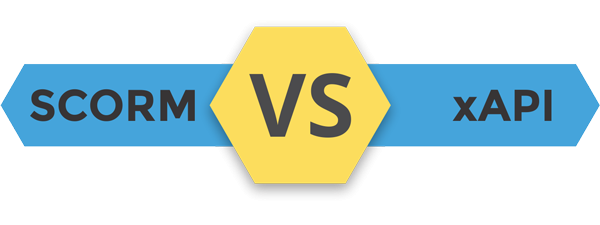Tin Can API (xAPI) vs SCORM – Basic Differentiation
Tin Can API (xAPI), SCORM 1.2, and SCORM 2004 are all e-learning standards that facilitate the tracking and reporting of learners’ interactions with online content. However, they differ in terms of their capabilities and the way they handle data. Here’s a brief overview of the key differences between them:
- SCORM 1.2:
- Interactivity: SCORM 1.2 mainly tracks completion and pass/fail status. It’s suitable for basic e-learning courses with linear content and simple interactions.
- Data Format: It uses JavaScript to communicate with the Learning Management System (LMS) and records data in a predefined format (CMI Data Model).
- Limitations: Limited support for tracking complex interactions, adaptive learning, and mobile learning.
- Advantages: Widely adopted, simple to implement, and suitable for basic course tracking.
- SCORM 2004:
- Interactivity: SCORM 2004 introduces more advanced interactivity tracking, supporting more complex interactions and adaptive learning scenarios.
- Data Format: It uses XML-based data exchange and introduces the concept of activity trees for better tracking of interactions.
- Sequencing: SCORM 2004 allows content to be organized into sequences and specifies rules for how learners progress through these sequences.
- Versions: SCORM 2004 has multiple versions (2nd, 3rd, and 4th editions), each with improvements in tracking, sequencing, and navigation.
- Advantages: Improved interactivity tracking, better support for adaptive learning, and more advanced data reporting.
- Tin Can API (xAPI):
- Interactivity: xAPI goes beyond traditional e-learning boundaries, tracking a wide range of learning experiences both online and offline, such as mobile apps, simulations, games, and real-world activities.
- Data Format: It uses a flexible “statement” structure to record learning experiences in a more human-readable way, using a simple “Actor-Verb-Object” format.
- Tracking Flexibility: xAPI allows for capturing learning experiences in various contexts, providing insights into learners’ behaviors and performance.
- Offline Tracking: Unlike SCORM, xAPI allows tracking of activities performed offline and syncs the data when the learner is online.
- Advantages: Supports a broader range of learning experiences, provides more comprehensive and versatile data tracking, and enables better insights into learner behaviors.

